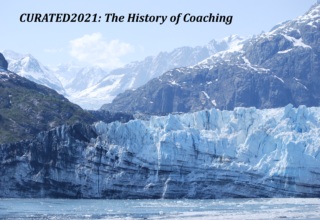
How can we fulfill our potential? Because it is also a practice that uses psychosocial means to elicit change, psychotherapy has much to offer coaching. Early in the 20’h century, Viennese psychiatrist Alfred Adler’s prescient notion of social interest as an indication of health and happiness was based on assumptions of phenomenology, social embeddedness, uniqueness and creativity, goal-orientation, and holism (Ansbacher & Ansbacher, 1956). His approach could have been a prescription for coaching, but it did not fit with what was considered acceptable science at the time and was thus rejected as being too value laden. As the 19th turned to the 20″‘ century, the question was what determined mental illness: heredity or environment? Deep-seated drives or rewards and punishment? Internal conflict or external reinforcement? Battles between various schools of psychotherapy raged throughout much of the 20’h century. These were ameliorated only when sophisticated research methods revealed that theoretical orientation made a relatively small contribution to psychotherapy outcome (Hubble, Duncan, & Miller, 1999).
A third alternative to the either/or battles, that is, both and neither, had been suggested by Adler’s holism and insistence on people’s ” … styled creative power” (Ansbacher & Ansbacher, 1956, p. xxiv). This perspective was reintroduced by the humanistic movement at the middle of the 20’h century. Related to the hierarchy of needs pyramid offered by Abraham Maslow (1943, 1968), Carl Rogers (I 951) insisted that people have resources within themselves that need only be nurtured in order to be revealed. This is one of the most important contributions of psychotherapy to coaching.
Cognitive therapy techniques developed by Albert Ellis (1974) and Aaron Beck (1976) further provided coaches with practical techniques and evidence to back up the claim that people can release themselves from debilitating emotional distress by changing how they interpret what is happening to them. That is, people can determine their own futures rather than being determined by their inherited or experienced past.
Social psychologist Kurt Lewin (1975) was instrumental in starting small training groups, or T-Groups, run by the National Training Laboratories for Group Dynamics (NTL) in organizations on the East Coast of America in the mid-20″‘ century. In 1964, Fritz Perls and his wife Laura took up residence at Esalen Institute, where they conducted groups similar to those run by NTL. Werner Erhard was influenced by his experience at Esalen to start a movement, now called Landmark Education (http:/ /www.landmarkeducation.com/ landmarkforumjsp) that relies on group dynamics to effect personal change. Erhard and Landmark were cited in the research done by Vikki Brock (2007) as being very influential in the development of coaching. Many self-help books and groups based on the assumption of self-determination flourished in the late 20’h century.
A strong theoretical base for the capacity of human beings to self-determine was introduced to psychotherapy in the late 20th century with the development of narrative (White & Epston, 1990), metaphor (Kopp, 1995), and question-centered (Goldberg, 1997) therapies. All of these approaches draw on sociology (Berger & Luckmann, I 966; Foucault, 200 I), discourse analysis (Jaworsky & Coupland, 1999), hermeneutics (Seebohm, 2004), literary theory (Culler, 1997), and systems (Bateson, 2000; Maturana & Varela, 1980) and family systems (Bowen, 1978) theory to support the idea that people are meaning-makers. These influences on psychotherapy provided theoretical foundations and practical applications that have been inherited by coaching. They represent a shift from the assumption that people’s personalities and behaviors are determined by objective forces (either heredity or environment), to the assumption that they are constructed through active, unique, meaning-making processes.
Download Article 1K Club


















